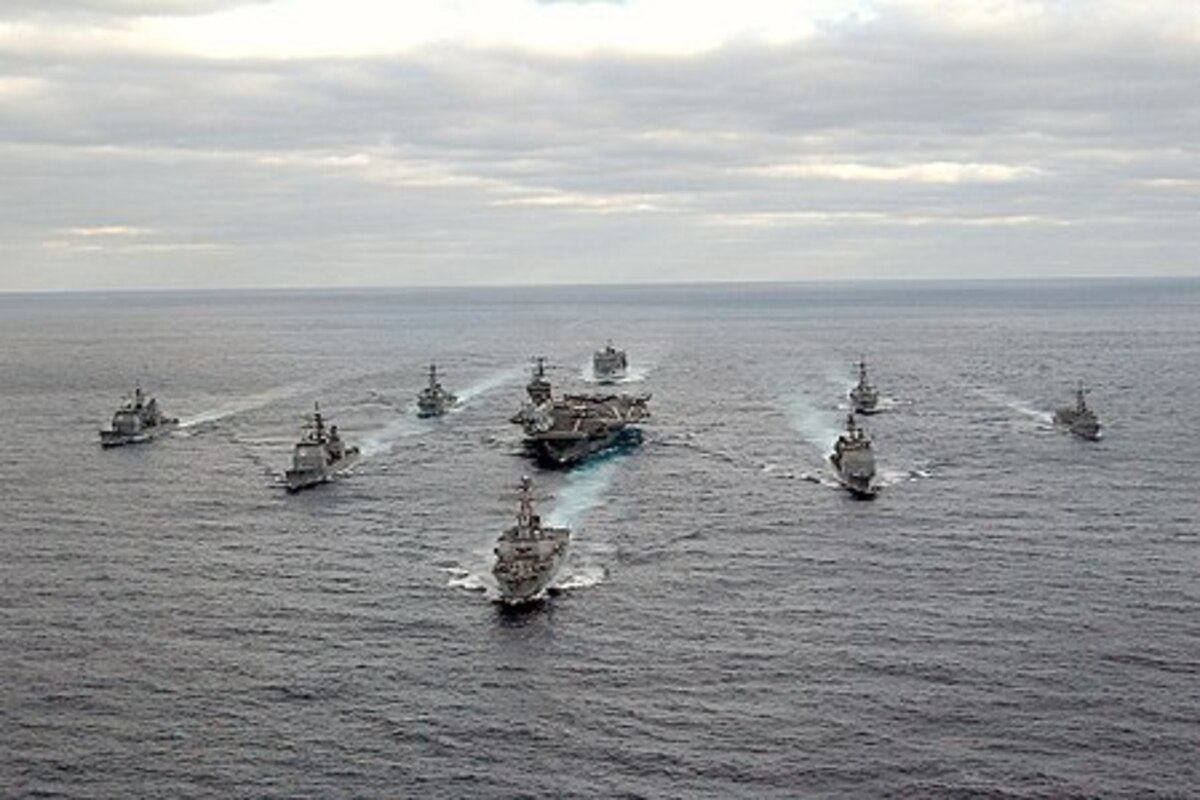Amongst the most visible expressions of sovereign assertion and hegemonic instinct is expeditionary power projection. Walter Raleigh famously said, “Whoever commands the sea, commands the trade; whosoever commands the trade of the world commands the riches of the world, and consequently the world itself”. The importance of a powerful Navy to conjure that impression, deterrence, and contention, is irreplaceable. The ability to exercise that capability and control across oceans is called ‘Blue-Water-Navy’ capabilities.
The United States Defense Counterintelligence and Security Agency defines a ‘Blue-Water Navy’ as ‘a maritime force capable of sustained operation across the deep waters of open oceans. A blue-water navy allows a country to project power far from the home country and usually includes one or more aircraft carriers. Smaller blue-water navies are able to dispatch fewer vessels abroad for shorter periods of time’.
While there is no exact definition of the same except to suggest control capabilities, currently only the United States fits the bill for ‘Global Reach’ (as per the Todd & Lindberg classification system), and France and the United Kingdom for ‘Limited Global-Reach’ projection. The likes of Russia, China, India and even Italy, are only believed to have ‘Multi-Regional Reach’ capabilities. Therefore, a sure sign of a nation’s overall power on the global stage can be decoded from its investments, upwards or downwards, on the naval capability scale.
Advertisement
The robust growth of the People’s Liberation Army Navy (PLAN) of the Chinese regime, is apparent from the fact that it already is the ‘world’s largest Navy’ (US Department of Defense’s 2020 report pegs the PLAN as having 350 odd ships and submarines, including 135 major surface combatants ~ as opposed to 293 for the US Navy) in terms of the numbers of ships deployed. PLAN figures do not include the assets of the Chinese Coast Guard and other maritime militias, which if added, numerically double the number of ships.
While there are obviously more pertinent naval assessment metrics such as tonnage, class of ships, support systems, reach, technology et al ~ recent focus on these qualitative aspects, and not just the quantitative count, is for real. The Chinese navy has grown from one ramshackle former-Soviet era aircraft carrier to one indigenously made aircraft carrier and plans for another staggering five, to a slew of cutting-edge destroyers, corvettes, cruisers (Type 055 Renhai-class) to nuclear powered submarines (with ICBM-armed nuclear missiles).
The days of replicating the US carrier-based strike groups/ flotilla do not look too far stretched. The fixation of annexing Taiwan forcibly is also getting the requisite shape with the development of the first Yushen-class large amphibious assault ship. Clearly, PLAN has enough bite to assert its belligerence in the vast expanse of the South China Sea, well beyond its traditional mandate of what it calls ‘near seas defense’.
Now, the focus on fructifying its ‘far seas protection’ is clearly reflective in its expansionist moves ~ which manifests in unprecedented investments in technology, weaponry platforms and real-estate in the form of foreign naval ‘bases’ that are secured by coercion (e.g. the illegal ‘nine-dash line’ formula of the Chinese, disputed by neighbouring and affected countries like the Philippines), physical creation (reclamation project e.g., Spartly and Paracel Islands) or through ‘cheque-book’/‘debt-traps’ (e.g. 99 year lease of the Sri Lankan port of Hambantota).
In 2017, PLAN opened its first official overseas naval base in a geopolitical hotspot, around the strategic chokepoint between the Red Sea and the Gulf of Aden, through which one-third of the world’s ships pass for energy and cargo. While the Chinese paint the Djibouti PLAN base as a ‘logistical support’ and ‘support facility’ ~ development of military wherewithal at the Djibouti port continued in earnest, even in pandemic times, so that it can now accommodate one of the Chinese aircraft carriers, if the need arises.
This facility is in addition to the many other ‘indirect’ port facilities where the Chinese PLAN could assert its military power through its famed ‘String of Pearl’ ports, dotting the Asian-African coastline e.g., Gwadar in Baluchistan, Pakistan.
The skeletal build-up of morphing from ‘Multi-Regional Reach’ to that of ‘Limited-Global-Reach’ is unmasking itself, obviously and surely. As China’s unbridled economic-diplomatic influence expands across continents, it is the parallel visibility of the PLAN footprint to project combat power and protect its interests, that is inevitable.
The entire Chinese juggernaut or economic ‘miracle’ (that finances the patent expansionist ambition) is predicated on the seamless to-and-fro of its wares, supplies and energy requirements. For this, ensuring that no enemy power can enforce a ‘choke’ or stranglehold on its trade/seafaring routes, is imperative. Guaranteeing such sovereign power-assertion triggers justifiable fears of encroachment and usurpation of the traditional spheres of influence of other countries.
The forward movement of its bases, missile batteries and other supporting military infrastructure onto the recently dredged islands with naval bases and long runways (capable of hosting fighter planes and long-range bombers), have set off alarm bells in the countries on the rim of the South China Sea and further up to Japan and Australia.
Reactionary international coalitions like the Quad (‘Quadrilateral’ Sino-wary powers like India, US, Japan, and Australia) or more recently AUKUS (Australia, United Kingdom and US), barely conceal their agenda of ‘containing’ the Dragon’s menacing and growing footprint.
The ‘Blue-Water’ gambit of the PLAN was in full display as a fleet of four PLAN ships (guided missile cruiser, guided missile destroyer, general intelligence vessel and an auxiliary vessel) provocatively sailed near a US exclusive economic zone (EEZ) near Alaska’s Aleutian Islands. Tellingly, the Chinese official mouthpiece, Global Times, noted the purpose, ‘seen as a countermeasure against US military provocations on China’s doorsteps in the name of freedom of navigation’.
The unsubtle message of expanding the PLAN presence from its standard playground of cat-and-mouse games with Taiwan, Japan and other Asean countries, towards the more distant Eurasian waters, was unmistakable.
Countries like Japan and Australia have been forced into overturning their deliberate pacifism and start rearming, reasserting, and stitching strategic alliances against ‘Pax Sinica’ or peace on Chinese terms! The mirror of China’s ambition is plainly reflected in the fate of the ‘blue-water’ gambit of the Chinese PLAN.











